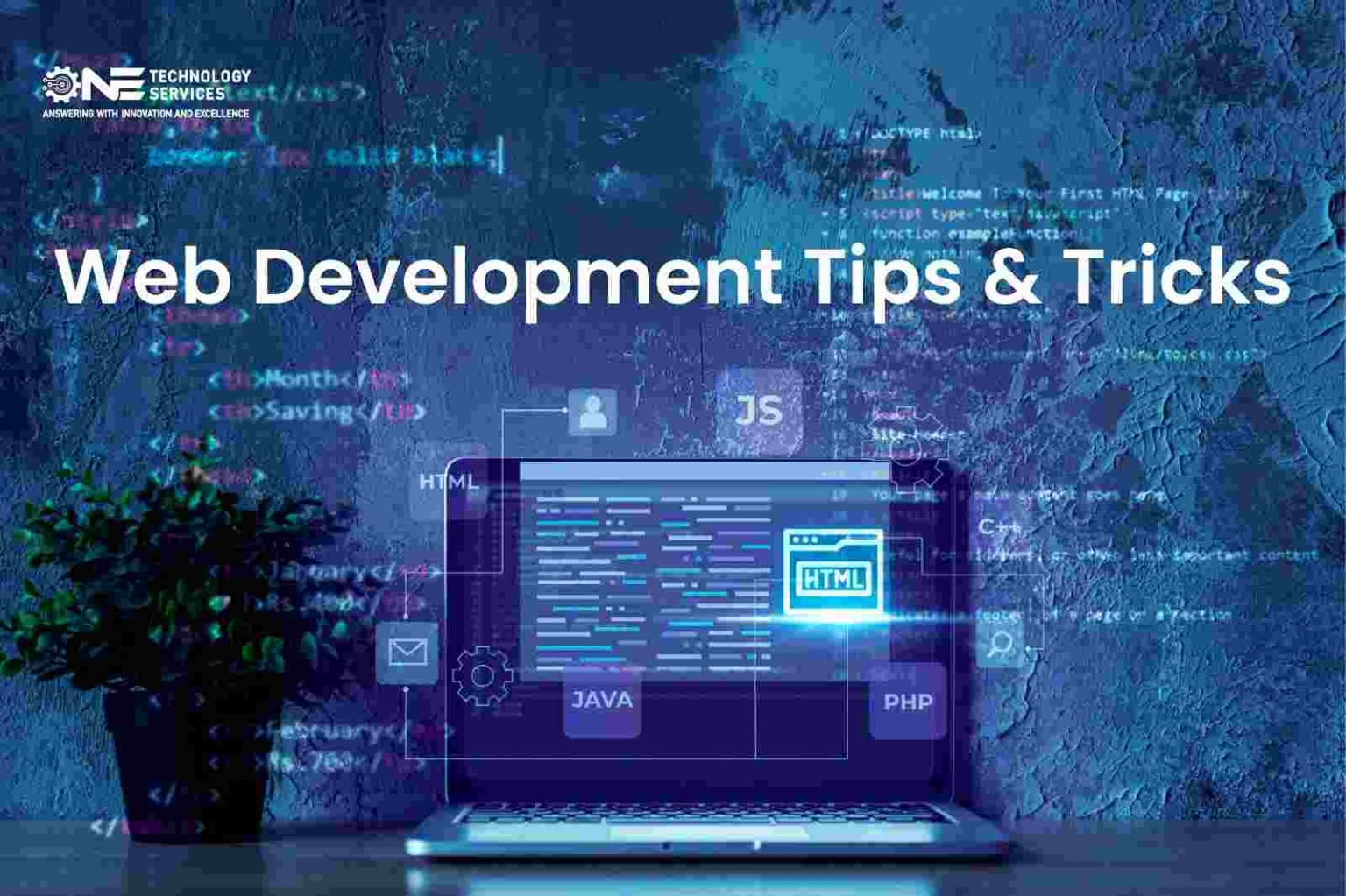Web development is an ever-evolving field, and staying up-to-date with the latest best practices is crucial for creating efficient and high-performing websites. In this comprehensive blog, we will delve into a wide range of web development tips and tricks that can help you elevate your skills and deliver exceptional results.
From optimizing website performance to ensuring cross-browser compatibility and maintaining code quality, we’ll cover key areas that every web developer should focus on. So, let’s dive in and explore the best practices that can take your web development projects to new heights.
Structured HTML Markup

The foundation of any website is the HTML markup. Writing clean and well-structured HTML code that adheres to semantic principles is essential. Properly organizing your HTML elements, using appropriate tags, and employing semantic markup not only improves website accessibility but also assists search engine crawlers in understanding your content. By keeping your HTML code tidy and semantic, you enhance the maintainability and future scalability of your projects.
CSS Optimization

Efficient CSS optimization can significantly impact website performance. Minifying and compressing CSS files reduce their size, enabling faster load times. Additionally, utilizing CSS preprocessors like Sass or Less can streamline your workflow and improve code organization. Adopting modular CSS approaches such as BEM (Block, Element, Modifier) or SMACSS (Scalable and Modular Architecture for CSS) enables easier maintenance and code reusability.
JavaScript Best Practices

JavaScript is a powerful language, and employing best practices is vital for writing maintainable and performant code. Optimize JavaScript files by minifying and concatenating them to minimize network requests. Follow modular programming principles, breaking down your code into reusable functions and modules. Leveraging JavaScript frameworks like React or Angular can provide structure and enhance development speed. Ensure your code is well-documented and follows consistent naming conventions to enhance readability and collaboration with other developers.
Responsive Web Design
In today’s mobile-centric world, responsive web design is a must. Create websites that adapt seamlessly to various screen sizes and devices. Utilize media queries to apply different CSS styles based on the viewport width, allowing for a fluid and flexible layout. Test your website on different devices and use browser developer tools to ensure responsiveness across various resolutions. Prioritize mobile-first development to deliver an optimal user experience on smaller screens.
Website Performance Optimization
Website performance is crucial for user satisfaction and search engine rankings. Optimize image sizes by compressing and choosing appropriate file formats. Leverage browser caching and enable gzip compression to reduce server response time. Minify HTML, CSS, and JavaScript files to decrease file sizes. Use a content delivery network (CDN) to deliver your site’s assets from servers closer to the user’s location. Regularly conduct performance audits and utilize tools like Google PageSpeed Insights or GTmetrix to identify and address bottlenecks.
Cross-Browser Compatibility
Ensure your website functions consistently across different browsers and versions. Test your site thoroughly on popular browsers such as Chrome, Firefox, Safari, and Internet Explorer. Utilize feature detection and progressive enhancement techniques to ensure compatibility with older browser versions. Validate your HTML and CSS code to identify any potential errors or inconsistencies that may cause rendering issues.
Code Quality and Version Control
Maintaining code quality and utilizing version control systems are crucial for efficient and collaborative web development. Follow coding standards and conventions, use proper indentation, and comment on your code to enhance readability. Utilize linting tools to identify and fix coding errors and enforce consistent code formatting
Security Best Practices
Web security is paramount to protect user data and prevent unauthorized access. Implement proper input validation to mitigate risks of SQL injection, cross-site scripting (XSS), and other common vulnerabilities. Utilize secure protocols such as HTTPS to encrypt communication between the server and client. Keep your software dependencies up-to-date to address any security vulnerabilities. Implement user authentication and authorization mechanisms to ensure that only authorized users can access sensitive areas of your website.
Accessibility Guidelines
Creating accessible websites is essential to ensure inclusion and equal access for all users, including those with disabilities. Follow Web Content Accessibility Guidelines (WCAG) to make your website perceivable, operable, understandable, and robust. Utilize proper heading structures, alternative text for images, and descriptive link texts. Provide keyboard accessibility and ensure proper color contrast for visually impaired users. Regularly test your website with assistive technologies and screen readers to identify and address any accessibility issues.
Testing and Debugging Techniques
Thorough testing and effective debugging are crucial to delivering high-quality web applications. Adopt automated testing frameworks such as Selenium or Cypress for functional and regression testing. Use debugging tools in browsers and IDEs to identify and fix code errors. Implement error handling and logging mechanisms to capture and handle runtime errors effectively. Perform cross-device and cross-browser testing to ensure consistent functionality and appearance across various platforms.
Conclusion
By following these web development best practices, you can create robust, efficient, and user-friendly websites. Remember, web development is an ever-evolving field, and staying up-to-date with new trends, technologies, and best practices is essential.
Continually enhance your skills, experiment with new frameworks and tools, and seek opportunities for learning and growth. Embrace a mindset of continuous improvement and strive to deliver exceptional web projects that meet the needs of both users and stakeholders. By prioritizing clean code, optimal performance, security, accessibility, and thorough testing, you’ll be well-equipped to create impactful and successful web applications in today’s digital landscape.
